May 2018
In this issue
- International Organization for Standardization (ISO) Technical Committee (TC) 272 on Forensic Sciences – New international standards under development
- Free Access to Standards
- Biology/DNA SAC Updates
- Chemistry/Instrumental Analysis SAC Updates
- Crime Scene/Death Investigation SAC Updates
- Digital/Multimedia SAC Updates
- Quality Infrastructure Committee Updates
- Awards
- Message from the FSSB Chair
- Spotlight on Professional Organizations
- OSAC In the News
- Message from the Director
- Notice: OSAC Vacancies Related to Expiring Terms
- Research & Development Needs
- On the Horizon
- NIST Activities
International Organization for Standardization (ISO) Technical Committee (TC) 272 on Forensic Sciences – New international standards under development
By Erin Forry, ASCLD, U.S. TAG Chair, and Karen Reczek, U.S. TAG Member, OSAC QIC Chair
ISO TC 272 is a Technical Committee (TC) of the International Organization for Standardization (ISO) that has been established to develop standards related to the delivery of forensic science services across the globe. The standards that are being developed by this group pertain to laboratories and field based forensic science service providers, organizations involved in the analysis and/or interpretation of physical evidence for the purposes of presenting conclusions to a court of law, and to those who manufacture products used in forensic science. The scope of the TC does not include general quality management standards, as such standards are developed by other committees within ISO. Standards developed under TC 272 are not designed to replace ISO 17025 General requirements for the competence of testing and calibration laboratories or ISO 17020 Conformity assessment -- Requirements for the operation of various types of bodies performing inspection; instead the forensic science standards may be used in conjunction with these quality management standards, for accreditation purposes.
To date, 23 nations participate and 18 observe in the development of global forensic science standards. Each nation that participates in the in-person TC meetings represents the interests of their country’s mirror committee. Australia has served as the administrator to ISO TC 272 since its beginning in 2012.
The technical committee published its first standard in 2016 – ISO 18385 Minimizing the risk of human DNA contamination in products used to collect, store and analyze biological material for forensic purposes. This standard will ensure that DNA profiles developed from evidentiary items are not the result of DNA contamination of forensic consumables. The quality and nature of the materials, reagents, and consumables used by forensic service providers during testing must be considered as they impact the features of the physical evidence under examination. The committee develops standards directed towards manufacturers that are designed to control the production of such materials to ensure they are fit for forensic purposes. ISO TC 272 has commenced developing an additional manufacturing standard for other consumables used in forensic science.
While some countries are developing national standards, their development is not coordinated with other nations. Standard development efforts may be duplicated and if each nation follows a separate set of standards, exchange of forensic science information across borders may not be supported. Use of international standards in forensic science facilitates information sharing between international jurisdictions. Sharing forensic science information and evidence across borders may provide investigative information for crimes such as human trafficking, terrorism, and fraud among others.
ISO TC 272 is designing standards which will preserve the features of evidence that are subject to observation and to maintain the integrity of evidence through each stage of testing. TC 272 has been developing a series of forensic science standards that are to be accompanied by a vocabulary and framework document (Part 1). The first in the series is a standard that focuses on the recognition, collection, and preservation of evidence (Part 2).
ISO 21043-1 Forensic Sciences – Part 1 – Terms and definitions
ISO 21043-2 Forensic Sciences – Part 2 – Recognition, recording, collecting, transport and storage of items
At the recent TC 272 meeting in Tokyo in November 2017, the delegations in attendance debated and compromised as they worked to adjudicate comments to these documents and move Parts 1 and 2 forward into the final draft stage of the ISO standard development process. For more information, visit the Strategic Business Plan ISO/TC 272 Forensics Sciences.
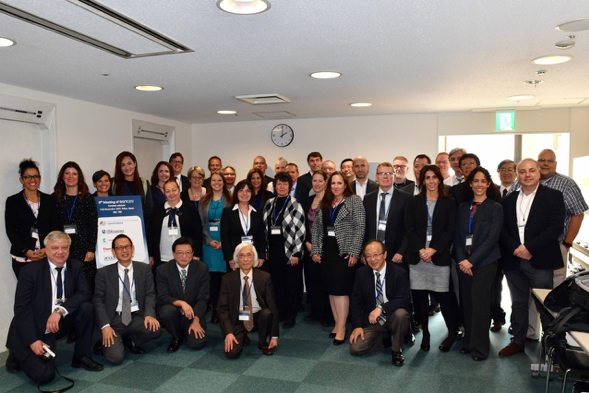
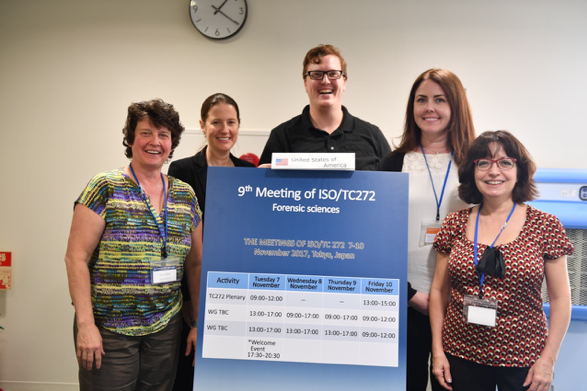
The Technical Committee 272 recently formed new working groups that have been approved to develop new work items.
WG 3 - ISO 20964 Forensic Sciences – Specification for consumables used in the collection, preservation, and processing of material for forensic analysis -- Requirements for product
WG 4 – ISO 21043-3 Forensic Sciences – Part 3 – Analysis and Examination
WG 4 – ISO 21043-4 Forensic Sciences – Part 4 – Interpretation
WG 5 – ISO 21043-5 Forensic Sciences – Part 5 – Reporting
Working groups meet regularly in web-based meetings where comments and edits are discussed. The working groups will meet in-person at the next ISO TC 272 meeting in Stockholm, Sweden 28 May through 1 June 2018.
The international forensic science community may look forward to the viewing, and using, these standards in the next few years. Once published, these standards will be eligible for consideration for placement on the OSAC Registry.
The U.S. Technical Advisory Group (TAG) for which ASCLD is the Secretariat, meets regularly in-person and via teleconference to reach consensus on comments from the working drafts and to represent U.S. interests. The primary purpose of a U.S. TAG is to develop and transmit, via ANSI, U.S. positions on activities and ballots of the related international technical committee. U.S. TAG members include the following organizations:
-
ANAB: ANSI -ASQ (ANSI-ASQ National Accreditation Board)
-
American Academy of Forensic Science (AAFS) Academy Standards Board (ASB)
-
The American Society of Crime Laboratory Directors (ASCLD)
-
Association of Forensic Quality Assurance Managers (AFQAM)
-
Association of State Criminal Investigative Agencies (ASCIA)
-
Defense Forensics and Biometrics Agency (DFBA)
-
National Institute of Standards and Technology (NIST)
Free Access to Standards
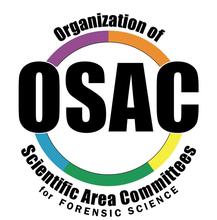
The Organization of Scientific Area Committees (OSAC) for Forensic Science through the National Institute of Standards and Technology (NIST) has a contract with ASTM International to enable 30,000 public criminal justice agencies to receive free access to ASTM's Committee E30 on Forensic Science's Standards. This agreement provides access to the approximately 48 existing standards under the jurisdiction of E30 and future standards developed during the period of performance. The specific stakeholders who will receive free unlimited web-based access are as follows:
• OSAC Members & Affiliates – approximately 750 individuals
• NIST and Federal/State/Local Crime Laboratories – approximately 412 laboratories
• Public Defenders Offices – approximately 6,000 offices
• Law Enforcement Agencies – approximately 18,000 offices
• Prosecutor Offices – approximately 3,000 offices
• Medical Examiner/Coroners Offices – approximately 3,000 offices
The purpose of this contract is to provide stakeholders access to existing forensic science standards in order to encourage broader review and adoption of those standards. Please note that ASTM International still holds the copyright for these standards and users of these standards must comply with ASTM's user agreement.
For those public-sector criminal justice agency employees in the stakeholder groups listed above who are interested in signing up for free access to all ASTM Committee E30 on Forensic Sciences Standards, please follow the instructions provided by ASTM. Users will need to register with ASTM using their business email address.
The American Dental Association (ADA) and American Academy of Forensic Science Standards Board (ASB) also provide free access to standards. Visit the Access to Standards page on the OSAC website.
Biology/DNA SAC Updates
The Biology/DNA SAC would like to acknowledge the passing of one of the great forensic scientists of our time and a good friend to all who knew him. The following was written by Biology/DNA SAC member Dr. John Butler.
In Memoriam: Eric Buel, Ph.D.
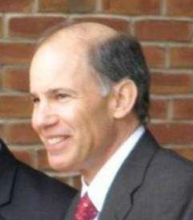
Eric Buel, a former director of the Vermont Forensic Laboratory, who was also an early pioneer in forensic DNA use in the United States and an advocate for solid scientific work and research in the field, sadly passed away on April 5, 2018 after a long battle with lymphoma. He served for several years on the OSAC Biological Methods Subcommittee and helped chair the combined Biology/DNA terminology group that by August 2016 produced about 450 definitions, which have now gone into the OSAC Lexicon. As a fantastic leader, colleague, and friend, he facilitated and conducted careful and thoughtful progress in everything that he did. Eric was a fellow of the American Academy of Forensic Sciences (AAFS) Criminalistics Section and received the Paul L. Kirk award (the highest scientific honor given by the AAFS Criminalistics Section) in 2014. His contributions to the field include developing new real-time PCR DNA quantitation assays and creating the Green Mountain DNA Conference. His obituary is available at http://www.healdfuneralhome.com/obituaries/Eric-Buel?obId=3056088#/obituaryInfo and a tribute from AAFS’s President Susan Ballou can be found at https://news.aafs.org/aafs-news/in-memoriam-eric-buel-phd/.
The Biology/DNA Scientific Area Committee (SAC) has had an extremely productive spring and is going into the summer addressing some new and exciting items such as familial searching, rapid DNA, and Next Generation Sequencing (NGS). The Biology/DNA Scientific Area Committee thanks Dr. George Herrin for his leadership, direction, and insight as the founding chair of the Biology/DNA SAC as he retires from Georgia Bureau of Investigation (GBI) after 27 years of service. His desire to advance the quality of forensic science is shared by the entire Biology/DNA SAC and we wish him well in his retirement. George Herrin, Ph.D. was replaced by Robyn Ragsdale, Ph.D., from the Florida Department of Law Enforcement, who had previously served as Chair of the Biological Data Interpretation and Reporting Subcommittee (BDIRC). Beth Ordeman, from the Pinellas County Sherriff’s Office, replaced Dr. Ragsdale as the chair of the BDIRC.
Biological Methods Subcommittee
The Biological Methods Subcommittee has been very active with 12 documents in process for submission to the Academy Standards Board (ASB) of AAFS. These documents cover standards related to training and validation as well as contamination mitigation. Additionally, they are working on developing two documents in conjunction with the Wildlife Forensics Subcommittee. They currently have four documents under evaluation at ASB also related to training and validation. Three new documents related to training and validation and one new task group assessing needs related to familial DNA have been identified by this subcommittee and approved by the Biology/DNA SAC.
Biological Data Interpretation and Reporting Subcommittee
The Biological Data Interpretation and Reporting Subcommittee currently has 11 documents in process including the proper establishment of thresholds, a variety of training standards relative to data interpretation, and the reporting of DNA conclusions. Two documents, one addressing the assigning of propositions for likelihood ratios and the other providing guidance for software validation, are ready for submission to ASB. One of their three documents at ASB, Standards for the Validation Studies of DNA Mixtures for the Verification of Laboratory Protocols, has received ASB approval and is in the process of ANSI approval. Following this, the document will return to the OSAC and hopefully will quickly move through the Registry process. This subcommittee has also identified four new task groups, approved by the Biology/DNA SAC, which will work on developing standards and guidelines in areas including management and use of elimination databases, NGS, and rapid DNA.
Wildlife Forensics Subcommittee
The Wildlife Forensics Subcommittee is committed to advancing quality in their diverse field and is currently developing 11 documents addressing such wide-ranging topics as geographical assignment, serological methods for species identification, morphology, and technique validation. Along with the Biological Methods Subcommittee, they are also developing two mitochondrial documents. Their strong commitment to the OSAC endeavor has led to their submitting a total of six documents to the ASB for standards evaluation addressing topics such as general wildlife standards, wildlife DNA standards and report writing.
Chemistry/Instrumental Analysis SAC Updates
The FSSB recently approved E2927-16e1 ("Standard Test Method for Determination of Trace Elements in Soda-Lime Glass Samples Using Laser Ablation Inductively Coupled Plasma Mass Spectrometry for Forensic Comparisons") to be placed on the OSAC Registry
The following documents were approved by the Chemistry SAC to move to the FSSB for a vote to be placed on the OSAC Registry. The public comment period began on April 9, 2018 and ended May 9, 2018.
- E2937-18: Standard Guide for Using Infrared Spectroscopy for Forensic Paint Examinations.
- E1610-18: Standard Guide for Forensic Paint Analysis and Comparison.
The following document has also been approved by the Chemistry SAC to progress to the FSSB for a vote to place on the Registry:
- E3085-17: Standard Guide for Fourier Transform Infrared Spectroscopy in Forensic Tape Examinations.
The following documents are under review before being sent to the SDO (ASTM):
- Standard Guide for a Systematic Approach to the Analysis and Identification of Ignitable Liquids.
- Standard Practice for Quality Assurance of Laboratories Performing Analysis of Ignitable Liquids and Ignitable Liquid Residues.
- Standard Practice for a Forensic Tape Analysis Training Program.
- Standard Practice for a Forensic Paint Analysis Training Program.
- E2808-11: Standard Guide for Microspectrophotometry in Forensic Paint Analysis.
- Standard Guide for the Collection of Soils and Other Geological Evidence for Forensic Applications.
Toxicology Subcommittee
Standard for Mass Spectral Data Acceptance in Forensic Toxicology has passed at the subcommittee level. The task group membership included Toxicology and Seized Drug subcommittee members and affiliates. Please mark your calendars as a virtual pitch meeting of this standard is scheduled for June 7, 2018 at 2 PM EDT. Stay tuned for the announcement on how to log into the pitch meeting.
The following documents were presented to the subcommittee for feedback during the in-person meeting in Chicago:
- Standard Practices for Estimating Measurement Uncertainty of Quantitative Measurements in Forensic Toxicology.
- Standard for the Scope and Analytical Sensitivity of Forensic Toxicological Testing in Drug-Facilitated Crime Investigations.
- Standard for the Scope and Sensitivity of Forensic Toxicological Testing in Impaired Driving Investigations.
- Standard Identification Criteria for Analytes in Forensic Toxicology.
- Best Practices for Alcohol Retrograde Extrapolation.
Two additional research needs documents were approved in March. They will be forwarded to OSAC Affairs for publication on the OSAC website.
OSAC subcommittee members participated with AAFS ASB Toxicology Consensus Body members to adjudicate public comments received as part of the AAFS ASB SDO process. Two OSAC drafted documents are nearing completion of the adjudication phase:
- Standard Practices for Method Validation in Forensic Toxicology (ASB Standard 036)
- Guidelines for Opinions and Testimony in Forensic Toxicology (ASB Best Practice Recommendation 037)
Seized Drugs Subcommittee
The Seized Drugs subcommittee has finalized adjudication of the comments received during the OSAC Public Comment period for E2329-17 (Standard Practice for Identification of Seized Drugs) that occurred during December 6, 2017 thru January 5, 2018. The adjudication package has been forwarded to the Quality Infrastructure Committee (QIC) for process control check (RA-800) and to confirm compliance with the adjudication process (RA-900).
The Seized Drugs subcommittee also finalized (in collaboration with two separate ASTM working groups) 5-year revisions of two additional documents: E2764-11 (Standard Practice for Uncertainty Assessment in the Context of Seized-Drug Analysis) and E2882-12 (Standard Guide for Analysis of Clandestine Drug Laboratory Evidence). The revised versions of these two documents were forwarded to ASTM and are currently being balloted and available for vote and comments at the SDO level.
Gunshot Residue Subcommittee
E1588-17: (Standard Guide for GSR Analysis by SEM/EDS) will be voted by the Chemistry SAC soon to be placed on the OSAC Registry.
Crime Scene/Death Investigation SAC Updates
Medicolegal Death Investigation Subcommittee
The Medicolegal Death Investigation Subcommittee has made available 38 documents from SWGMDI. These can be found at:
https://www.nist.gov/topics/forensic-science/medicolegal-death-investigation-subcommittee
Dogs and Sensors Subcommittee
The Dogs and Sensors Subcommittee has made available 24 documents from SWGDOG. These can be found at:
https://www.nist.gov/topics/forensic-science/dogs-and-sensors-subcommittee
Digital/Multimedia SAC Updates
Facial Identification Subcommittee
The Facial Identification subcommittee currently has committee documents with ASTM.
- 2 published standards (Guidelines for Postmortem Facial Image Capture and Capture Equipment and Specification)
- 1 document in ballot (Standard Practice for Facial Comparison Methods)
- 3 documents preparing to send to ASTM within the next ~6 months (Image Processing for Facial Recognition searches, Training Program document, Image Factors to Consider in Facial Assessment)
The subcommittee worked on 7 additional documents as part of the March 2018 OSAC meeting: (outside of the 3 that we will be sending through the SDO process) throughout the week. One of the documents (on conclusions) was worked on with a great amount of assistance and input from the Legal Resource Committee (LRC) with additional assistance from a Quality Infrastructure Committee representative who sat in on the discussion/wordsmithing of the document.
Video Imaging/Technology Analysis (VITAL) Subcommittee
Finalizing FAQs about disciplines and core processes within the subcommittee. The FAQs are planned to be published on the VITAL section of the OSAC website.
Several standard guides are currently under Resource Committee review. These include topics such as:
- Forensic Photogrammetry
- Content and Source Authentication
- Video, Imaging, and Photography Related Training
- Fingerprint Resolution
- Work continued on a Standard Guide for Forensic Video Analysis
- Work began on two new projects:
- Standard Guide for Photographing Fingerprints
- Standard Guide for Crime Scene Photography
Digital Evidence Subcommittee
The Digital Evidence subcommittee currently has committee documents in progress:
- A standard/guide entitled “New Guide for Forensic Audio Laboratory Setup” has been received back from ASTM with comments.
- Establishing Confidence in Digital Forensic Results by Error Mitigation Analysis – Back from ASTM with comments, up for next E30 Ballot at ASTM.
- Standard Practice for Examining Magnetic Card Readers major revision – up for next E30 Ballot at ASTM.
- Developed a road map document that defines 14 other documents to be developed by OSAC-SR.
- Approved the “Process Map of Current Practices in Speaker Recognition” for release pending a final review by the subcommittee.
- Began development of a draft SR framework document extracted from the Process Map.
- Finalized document, “Principles for forensic analysis and expression of conclusions”. Document was approved by Kavi vote.
- Developed FAQ document for forensic speaker recognition. Kavi voting on final version is open through May 4.
- Defined four areas of research and drafted corresponding Research Needs Assessment Forms. These forms are ready for OSAC-SR review.
- Developed a draft best practice document for a portion of the framework: “Pre-Analysis Observation, Processing and Relevant Population Data Selection”.
- Resubmitted “Audio Collection Guidelines for Speaker Recognition” document to DMSAC.
- Resubmitted document on Type-11 records to DMSAC.
- Began conversations with Johnathon Phillips on black box testing for forensic speaker recognition.
- Consensus on reaching out to the Acoustical Society of America (ASA) at their next meeting (May 7-10, 2018) to determine interest in supporting OSAC-SR standards documents.
- Development of a draft list of key literature on speaker recognition.
Quality Infrastructure Committee Updates
The FSSB has released the QIC’s revised OSAC processes this month. The revised processes include:
- OSAC Registry Approval Process Map and Description
- OSAC Working with an SDO Process Map and Description
- A new High-Level OSAC Process Map
The revised processes include moving up the Resource Committee and Statistics Task Group input to earlier in the process, the addition of decision trees relative to interdisciplinary documents, and adding formal “exit” boxes. The high-level process map is new and is meant provide a map of how the two processes fit together as well as the major milestones in moving documents forward for development and Registry Approval. All the OSAC processes and templates can be found on the OSAC website under OSAC Standards Approval Processes. The revised OSAC Technical Merit Discussion Guidance and Worksheet was released in January.
The QIC is also working on the edits to the OSAC Lexicon with the OSAC subcommittees, including consolidation of duplicate terms from multiple subcommittees, identifying and adding the source of terms that have not been verified, and cleaning up other items. The QIC is also leading a project to reach consensus on the definition of 25 terms that have been identified by the Legal Resource Committee as problematic.
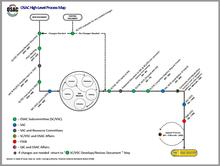
Awards
Distinguished Individual Service Award
Presented by the Forensic Science Standards Board (FSSB), in recognition of outstanding and extraordinary efforts in furthering the Organization of Scientific Area Committees for Forensic Science (OSAC) mission and objectives.
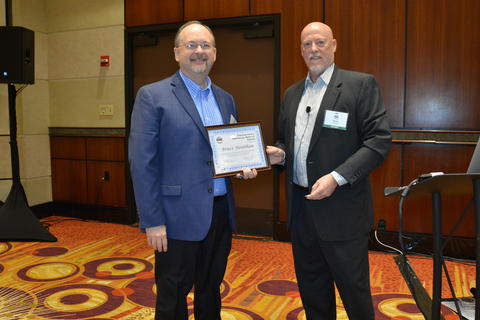
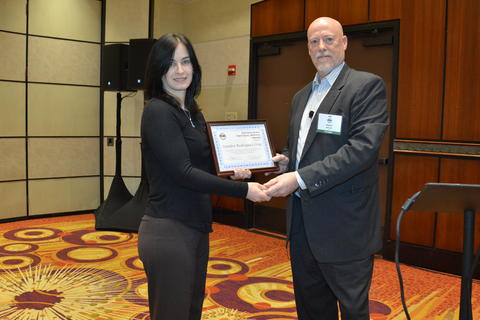
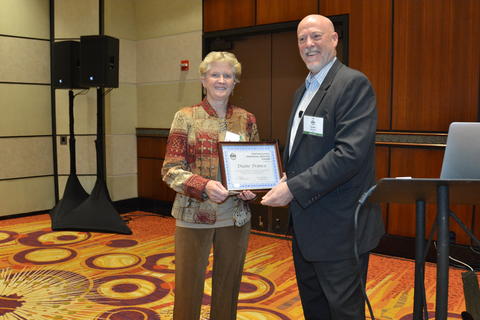
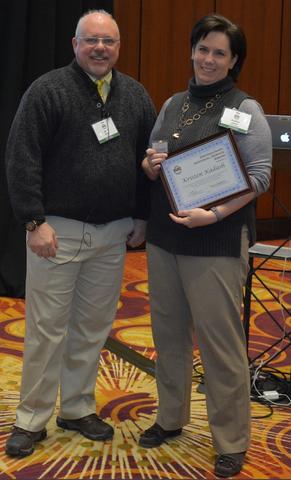
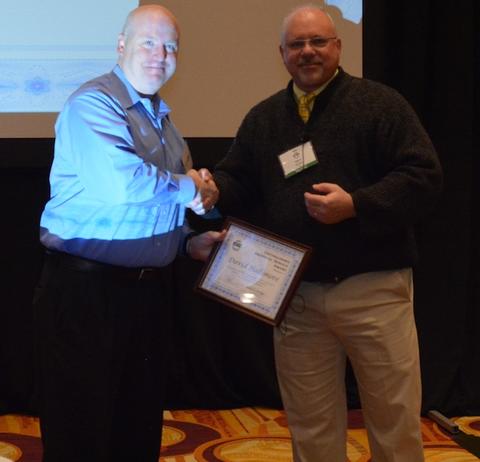
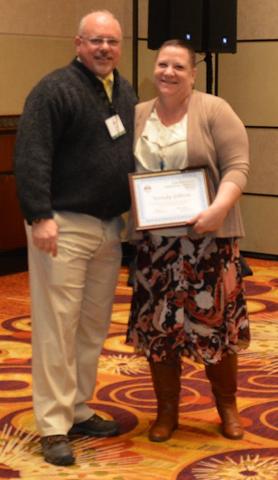
Task Group Award
The Seized Drugs GC-MS Task Group is recognized for their latest document “Standard Practice for Assessment of Gas Chromatography-Electron Ionization Mass Spectrometry Data for the Qualitative Analysis of Seized Drugs” which is the very first originally developed standard within the Seized Drugs Subcommittee.
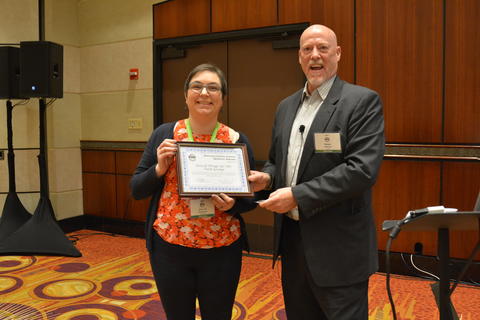
Materials (Trace) Subcommittee
The Materials (Trace) Subcommittee is recognized for its outstanding work in furthering OSAC’s mission. This subcommittee is responsible for several sub-disciplines, standardizing many different techniques used by forensic chemistry labs, and has a total of 20 standards at some point within an SDO process. The subcommittee is proactive in its approach to standards and the initiation of research and development needs, all in the full spirit of OSAC.
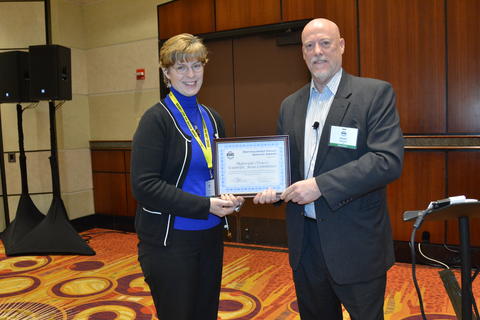
Honorable Mention
Ms. Karen Reczek, QIC Chair is recognized for her outstanding work in the coordination of the quality systems, processes, and coordination related to standards under consideration for inclusion on the OSAC Registry.
Message from the FSSB Chair
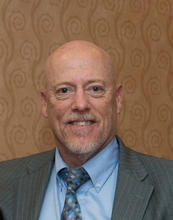
On April 25th, West Virginia University (WVU) celebrated 20 years of providing a forensic science curriculum at the university level. As part of that celebration, members of OSAC (myself, Jose Almirall and John Butler) were invited to speak to students and faculty. What is the significance of this event? It demonstrates how far the forensic sciences have come in the last 20 years. In 1998, there were very few accredited forensic science programs at the college/university level. Traditional forensic disciplines were generally taught “on the job” or through the state law enforcement academies. Some of us remember when the FBI had the wherewithal and means to provide training at the Quantico campus to a few, lucky individuals who were selected from a large pool of applicants. With the increasing attention on and interest in the forensic sciences, college-level forensic curriculums are becoming the rule rather than the exception.
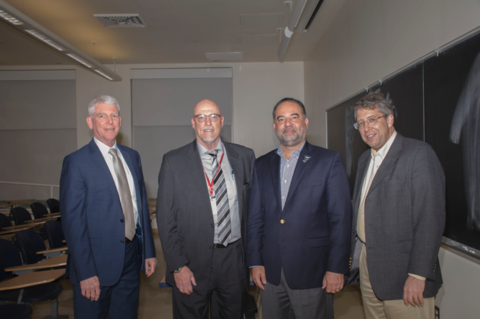
How does this apply to OSAC? These students coming out of exceptional programs like the one at WVU are the future of the forensic science field and, in turn, the future of standards development. One of the building blocks of our implementation plan is to continue outreach to and cooperation with the academic community. On-going research, academic excellence and professional development at colleges and universities will be critical to, not only the success of OSAC, but the success and acceptance of the disciplines across the forensic science spectrum. For those of you currently affiliated with a school and its forensic science program, I applaud you! For the rest of our members, I encourage you to offer your expertise, energy and knowledge to a forensic science educational program near you. Once again, hats off to the WVU Forensic Science program and to other schools engaged in this important enterprise. We look forward to the future graduates of these programs joining us in the field as practitioners, researchers and instructors as we continue to improve the forensic sciences for the benefit of all.
Spotlight on Professional Organizations
Update from Ray Wickenheiser, ASCLD President and Representative to OSAC
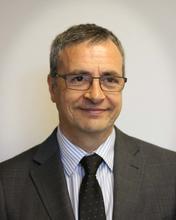
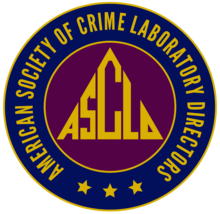
The American Society of Crime Laboratory Directors (ASCLD) is a nonprofit professional society of crime laboratory directors and forensic science managers dedicated to providing excellence in forensic science through leadership and innovation. The purpose of the organization is to foster professional interests, assist the development of laboratory management principles and techniques; acquire, preserve and disseminate forensic based information; maintain and improve communications among crime laboratory directors; and to promote, encourage and maintain the highest standards of practice in the field.
As the organization representing crime laboratory leadership, ASCLD is in full support of accreditation and the utilization of best practices and the latest applicable standards. Our members provide employees from their labs to staff many of OSAC’s Committees and Subcommittees, so it is a natural fit that we would also be strongly in support of adopting their work products at the earliest time possible, including as the standards are being developed. ASCLD disseminates information regarding the standards and OSAC at every meeting and throughout the year via our weekly newsletter, as well as through emails and webinars. We have a very large stake in developing and adhering to the OSAC Registry of Standards and therefore will be enabling their adoption through communication and peer-to-peer assistance. As stewards of the field of forensic science, we are committed to developing and implementing standards and best practices.
The forensic community has placed a large investment in OSAC and the development of improved standards. We are very grateful to those who have dedicated their time, skill and effort in this valuable work, and look forward to working hand in hand in their implementation.
Ray Wickenheiser is the current President of ASCLD and the ASCLD Professional Organization Representative on OSAC.
OSAC In the News
This section of the newsletter contains information on recent OSAC news releases and information published about OSAC via third party sources.
OSAC Releases an Online Lexicon for the Forensic Sciences (credit: NIST)
OSAC Lexicon Initiative (credit: Forensic Technology Center of Excellence)
OSAC Releases an Online Lexicon for the Forensic Sciences (credit: Forensic Magazine)
Forensic Terminology Explained: OSAC Releases New Online Lexicon (credit: CSAFE)
OSAC Releases Forensic Science Terminology Tool (credit: Forensic Resources - North Carolina Office of Indigent Defense Services)
This Week in Forensic Science – March 16, 2018 (credit: ISHI)
OSAC Releases Online Lexicon for Forensic Sciences (credit: Los Alamos Daily Post)
OSAC Lexicon – online dictionary for forensics (credit: Forensics Forum)
NIST’s Dogs and Sensor Subcommittee Builds on Achievements by SWGDOG (credit: Forensic Technology Center of Excellence)
Dhahi Khalfan Tamim Inaugurates Emirates Forensic 2018 (credit: Thomson Reuters Zawya)
Co-Founder of Innocence Project to Deliver Miller Distinguished Lecture at Georgia State Law (credit: Georgia State University Law Hub)
OSAC Invites Professional Organizations to Comment on ASTM Standards (credit: AAFS)
Message from the Director
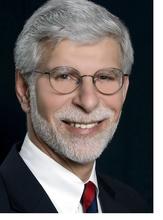
President Trump signed the FY2018 Federal Omnibus Budget into law on March 23, 2018. We have great news for all of you. OSAC has received a $3M appropriation for FY2018. A change in this year’s funding is that it is appropriated directly to NIST rather than through DOJ. What difference does this mean for OSAC? The answer is that there is no significant difference in the day-to-day operations of OSAC. In past years, DOJ transferred $3M each year to NIST sometime during the fiscal year. This year, NIST will receive its funding directly.
This means that OSAC will continue on course in FY2018 and the All Hands Meetings will be convened as planned in November and December 2018. We are very grateful for all of the support to maintain OSAC funding that we have received from all of you inside and outside the Federal government. With the help of more than 550 OSAC members and hundreds of affiliates and stakeholders, OSAC can now continue with its mission to facilitate strengthening forensic science standards and implementing them into practice.
Notice: OSAC Vacancies Related to Expiring Terms
With over 550 members working to develop a uniform set of forensic science standards and guidelines, OSAC is seeking to fill member vacancies on its committees and subcommittees. Vacancies will be available because a number of memberships terms expire this September. If the current member is interested in seeking a second term, he or she will be considered for the vacancy along with all other applicants who express interest in serving. Those who are interested and have not previously applied must submit an application in order to be eligible. Applications submitted by June 15, 2018, will be considered for the positions opening in October. All applications will be kept on file for future vacancies and affiliate roles. If you have previously submitted an application, you do not have to submit a new one unless your contact information or other answers have changed since your original application.
Research & Development Needs
The following research and development needs were identified by the relevant OSAC subcommittees since the publication of the last quarterly newsletter. A complete list of all OSAC Research and Development Needs can be found on our website.
Fire Debris & Explosives
• Concentration of Extracts Containing Volatile/Unstable Explosives
• Identifying Post-Blast Residue of Liquid Explosives
• Potential Transformation of Chlorate to Perchlorate and Visa-Versa During Explosion
• Research and Evaluation of Storage Conditions for Archiving Extracts from Fire Debris Samples
• Source Attribution for Post-Blast Residues
Toxicology
• Data Analytics in Forensic Toxicology
• The Role and Impact of Pharmacogenetics and Pharmacogenomics in Forensic Toxicology
Firearms and Toolmarks
• Assessment of Examiners' Toolmark Categorization Accuracy
• Consistency of Examiner Evaluation of Distance Determination GSR Patterns
• Evaluation of Examiner Conclusions Utilizing a Five-Point Scale
• Resolution Requirements for 3D Virtual Comparison Microscopy
• Study to Assess the Accuracy and Reliability of Firearms and Toolmark Examinations
On the Horizon

Future Meeting Dates for OSAC
- Summer FSSB Meeting 2018, June 6-7, 2018 – Indianapolis, IN
- OLSS and Fall FSSB Meetings, September 26-28, 2018 – Tampa, FL
- Chemistry/Instrumental Analysis SAC + 6 Subs and Crime Scene/Death Investigation SAC + 7 Subs OSAC Standards Meeting, November 5-8, 2018 – Houston, TX
- Biology/DNA SAC + 3 Subs, Physics/Pattern Interpretation SAC + 5 Subs, Digital/Multimedia SAC + 4 Subs, and Resource Committee OSAC Standards Meeting, December 11-14, 2018 – Phoenix, AZ
NIST Activities
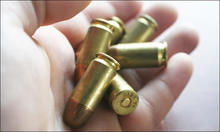
How Good a Match is It? Putting Statistics into Forensic Firearms Identification
On February 14, 1929, gunmen working for Al Capone disguised themselves as police officers, entered the warehouse of a competing gang, and shot seven of their rivals dead. The St. Valentine’s Day Massacre is famous not only in the annals of gangland history, but also the history of forensic science.
Read more…
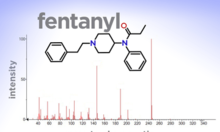
Free Software Can Help Spot New Forms of Fentanyl and Other Illegal Drugs: Forensic chemists can download the software from the NIST website
Fentanyl, the synthetic drug that is driving a nationwide overdose epidemic, is not only a killer. It’s also a shape shifter. Illicit chemists are constantly cooking up new forms of fentanyl, each with a slightly different chemical structure, stymieing law enforcement and putting users at greater risk.
Read more…
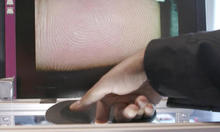
NIST Report and Data Could Bring Improvements to Fingerprinting Technology
Fingerprint capture technology has advanced to the point where high-quality rolled prints soon might be obtained without the manual assistance of a trained device operator, according to a new report issued by the National Institute of Standards and Technology (NIST). These advancements could help law enforcement collect information-rich prints more rapidly and economically.
Read more…

